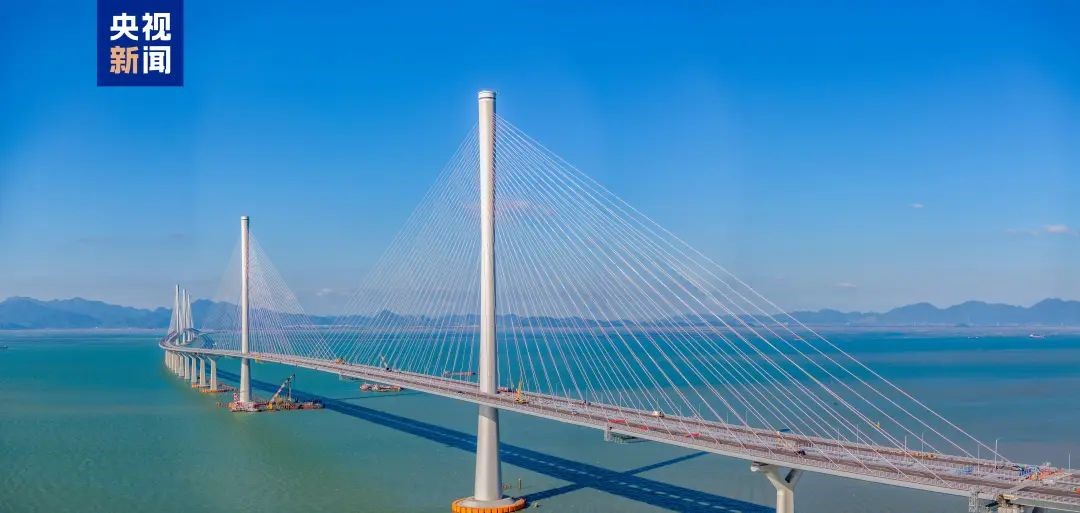China's First Seven Innovative Technologies - Huangmaohai Sea-crossing Channel
The Huangmaohai Sea-crossing Channel, following the Hong Kong-Zhuhai-Macao Bridge and the Shenzhen-Zhongshan Passage, is another major cross-sea project in the Guangdong-Hong Kong-Macao Greater Bay Area. It officially opened to traffic at 3:00 PM on December 11, with road tolls temporarily waived during the initial trial operation period. During its approximately four-and-a-half-year construction, the Huangmaohai Sea-crossing Channel introduced seven innovative technologies, making it a pioneering project in China.
The Huangmaohai Sea-crossing Channel, following the Hong Kong-Zhuhai-Macao Bridge and the Shenzhen-Zhongshan Passage, is another major cross-sea project in the Guangdong-Hong Kong-Macao Greater Bay Area. It officially opened to traffic at 3:00 PM on December 11, with road tolls temporarily waived during the initial trial operation period. During its approximately four-and-a-half-year construction, the Huangmaohai Sea-crossing Channel introduced seven innovative technologies, making it a pioneering project in China.
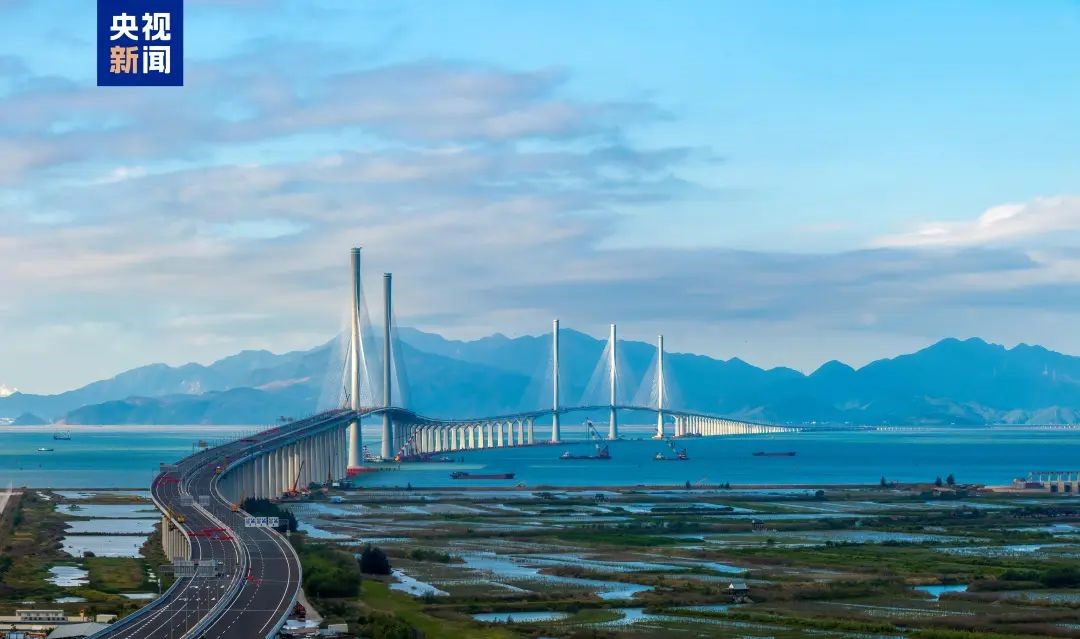
The first new hyperbolic single-column reinforced concrete cable tower structure
Based on a comprehensive consideration of factors such as wind resistance, navigation clearance, flood control, mechanics, structure, and economics, the main bridge adopts a single-column tower, segmented steel box girders, and a spatial cable-stayed bridge design. This approach enhances the overall structural performance of the bridge. At the same time, the design features a 'circular' element as the primary theme, pursuing a minimalist and elegant architectural style, achieving a harmonious unity of strength and beauty.
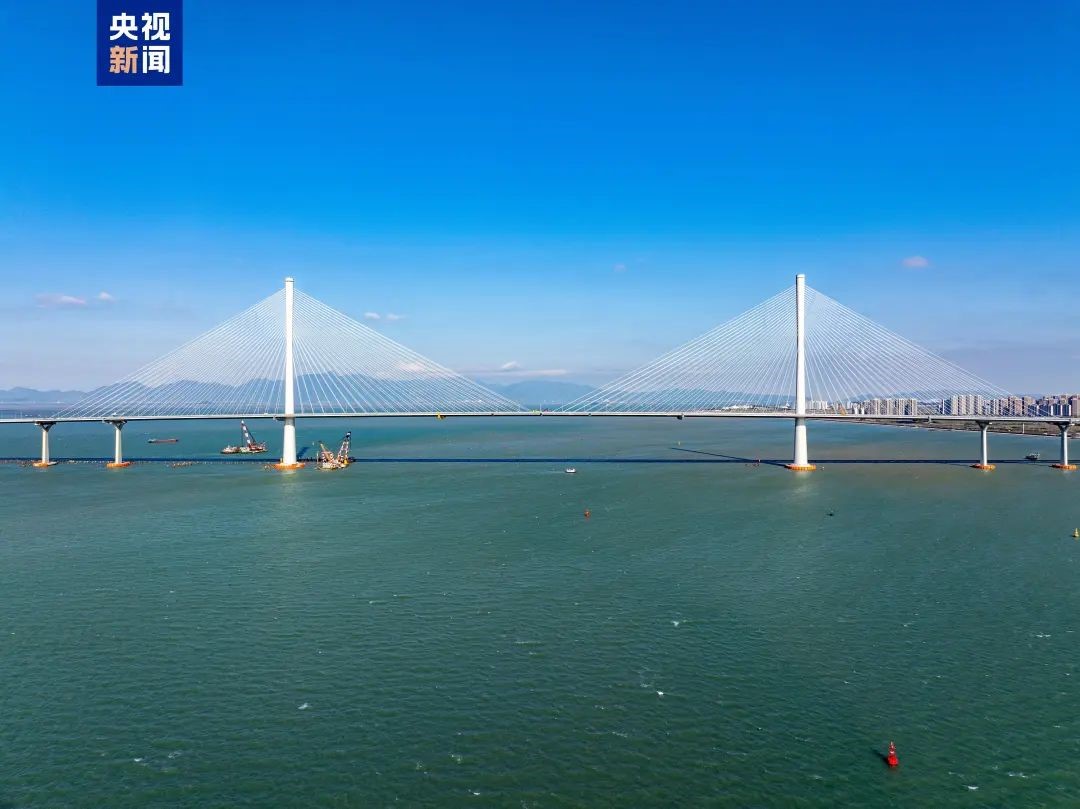
The project pioneered a high-performance structural system and vibration reduction and energy dissipation devices for ultra-large-span multi-tower cable-stayed bridges in the sea
Huangmaohai Sea-crossing Channel is the world’s largest three-tower cable-stayed highway bridge with a large span that has been completed. The project introduced the innovative technology of using central auxiliary cables to enhance the vertical stiffness of the super-large span single-column multi-tower cable-stayed bridge. By incorporating five pairs of central auxiliary cables, the maximum vertical displacement of the main beam was reduced by 39%, significantly improving the overall stiffness of the bridge. The project also innovatively proposed a multi-point integrated vibration reduction and energy dissipation structural system and developed more durable vibration reduction and energy dissipation devices. This innovation optimized the static and dynamic performance of the cable-stayed bridge, while the durability of the devices was enhanced by two times.
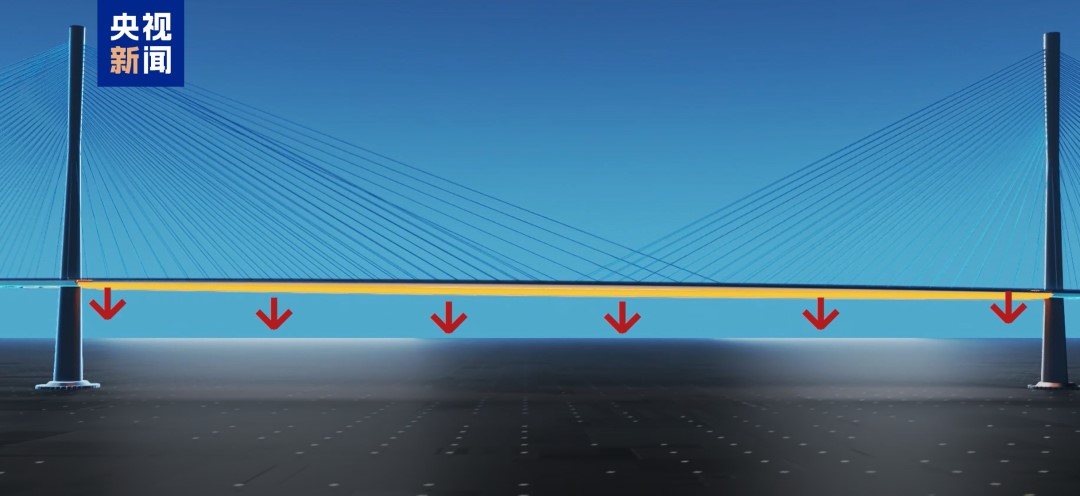
Pneumatic control measures for chatter and vortex vibration of split steel box girders proposed for the first time
The project completed pneumatic optimization of nearly 150 types of main beam cross-sections and introduced the innovative 'nozzle + horizontal vortex plate + lower central stabilizer' combined pneumatic measures for the first time. Additionally, the project conducted full-bridge vortex-induced vibration wind tunnel tests, which verified that no vortex-induced vibration phenomena were observed. The results exceeded the world’s most stringent vortex vibration evaluation criteria.
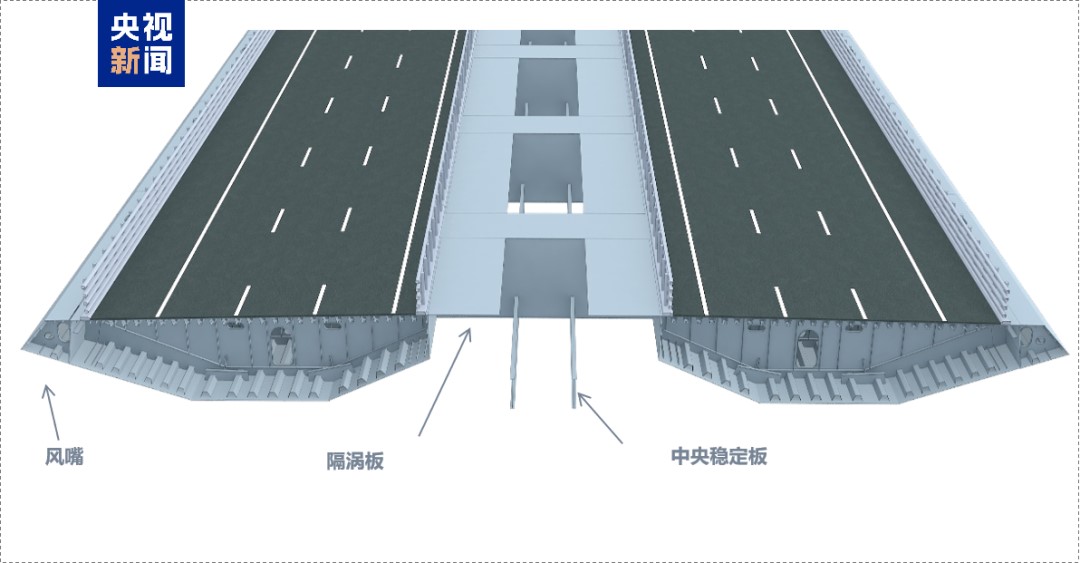
The first construction of special-shaped double-layer hyperboloid cable-stayed tower design-construction integration technology system
"The main bridge's pylon cross-section transitions smoothly from a circular shape at the bottom to a circular-ended shape and then back to a circular shape at the top. The project developed digital design, industrial manufacturing, modular assembly, and precise installation control technologies for the single-column shaped steel cables and wooden templates. It also pioneered the development of a new adaptive hydraulic climbing formwork system and a tower-building platform, and advanced large-volume concrete cracking control technology, significantly improving the construction speed of the columns.
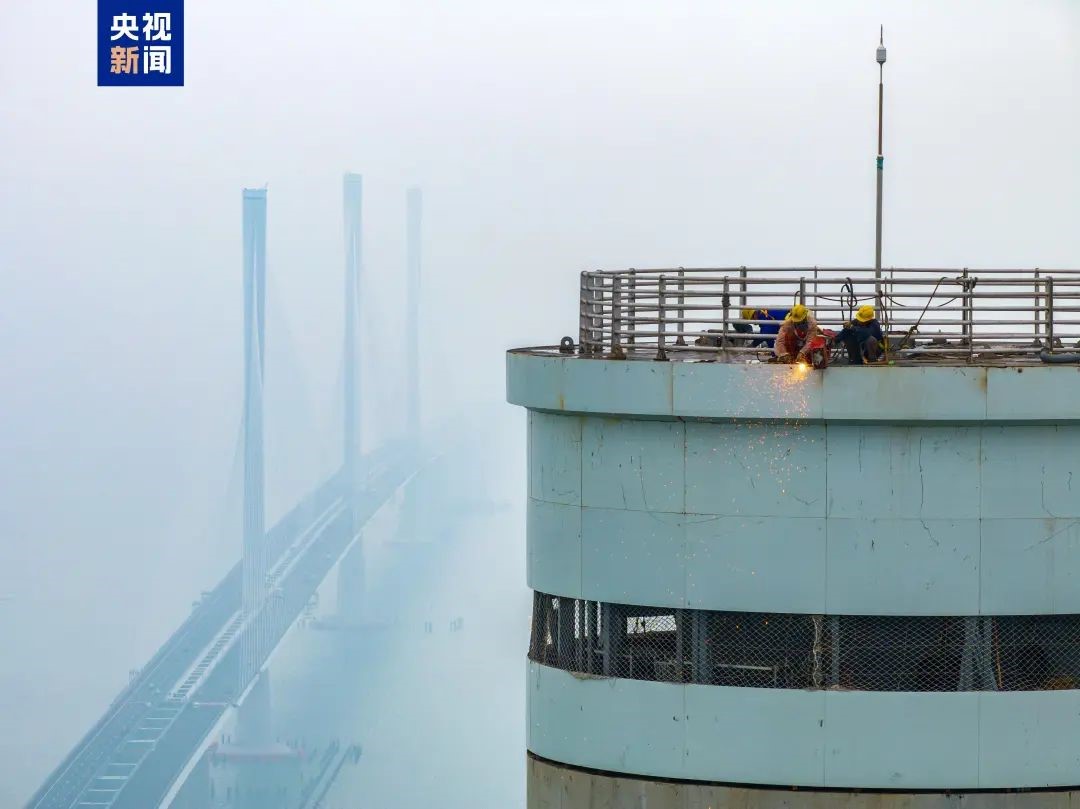
Developed TY-type pier construction technology under full offshore marine environment
The substructure of the central approach bridge adopts the whole width type TY pier, which has beautiful shape and more reasonable structural force, but the construction difficulty is higher. At the same time, the project has improved the construction efficiency by optimizing the epoxy reinforcement of the pier body, large cantilever TY-type cover beam reinforcing steel parts process, and so on.
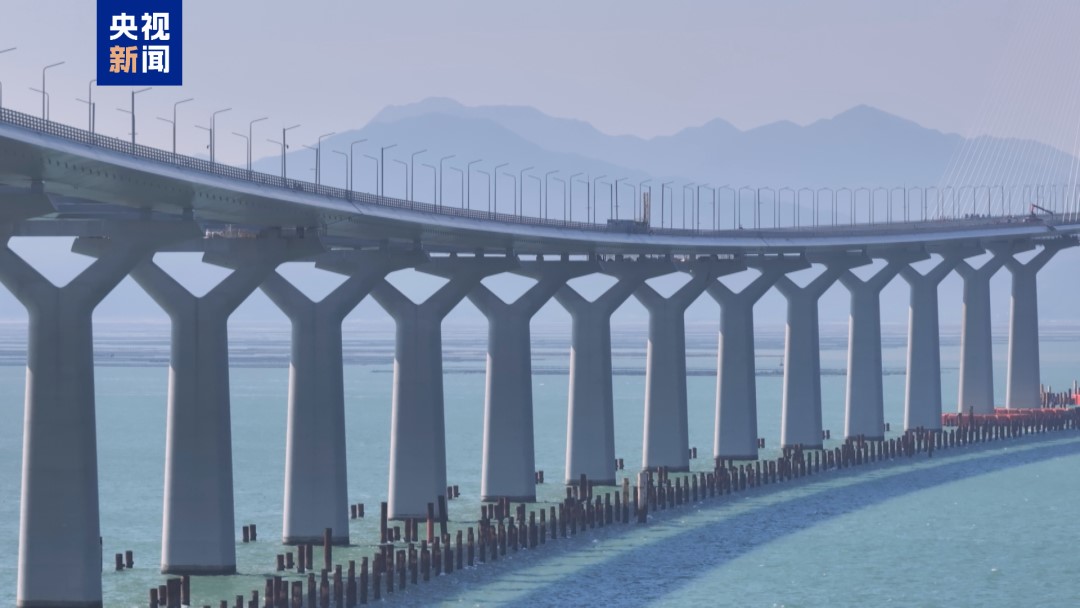
Improved linear control method for construction of ultra-wide split steel box girders
The main bridge is a fully floating system cable-stayed bridge, with the main beam constructed using a segmented steel box structure composed of two steel box girders and transverse connection boxes. The project introduced a construction line-shape control method for ultra-wide segmented steel box girders based on the small deformation control theory. It also developed asynchronous, flexible, and rapid closure technology for multi-tower cable-stayed bridges with dual main spans, along with a digital construction control system. This enabled high-precision closure with an error of less than 5 millimeters.
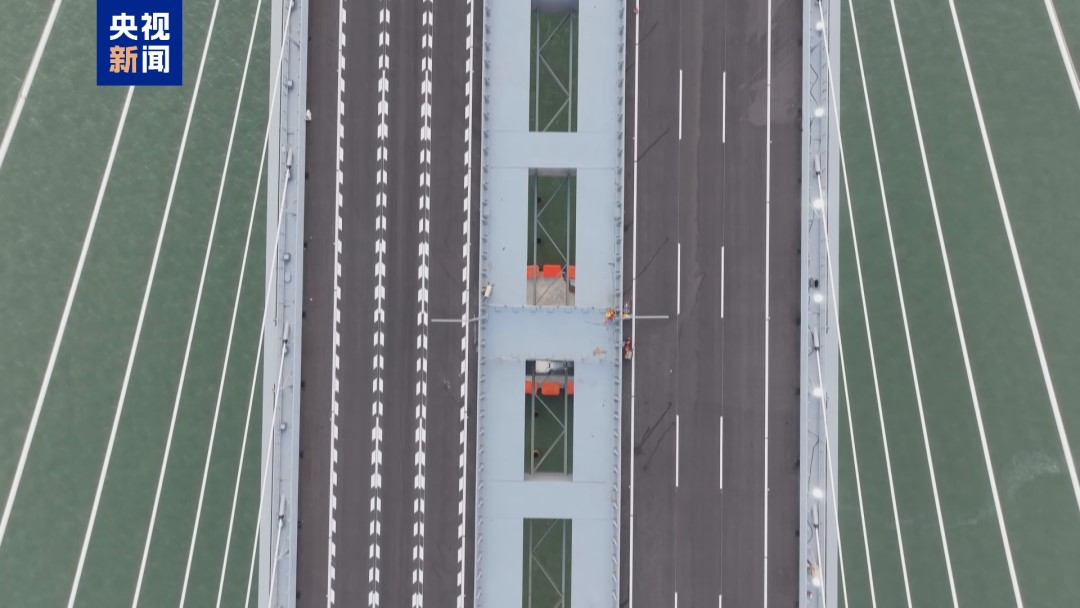
Established single Beidou-based cross-sea precision control measurement technology
The project established, for the first time, a Beidou-based continuous operation reference station for cross-sea bridge projects, meeting the need for real-time dynamic positioning throughout the construction process. This system enabled millimeter-level, long-distance, automated deformation monitoring of the sea-based tower columns. It also promoted the application of domestic Beidou single-system equipment and software in cross-sea bridge engineering, achieving the localization of precision control measurement technology and equipment.
